Despite being shut down a decade ago, the Collider Detector at Fermilab provided enormous amounts of data, some of which have recently been re-analyzed, leading to the discovery that the W boson is actually more massive than calculations and predictions expected. Plus, another JWST update, the newest most distant galaxy, gravitational waves, and an interview with Dr. Kelsi Singer about cryovolcanoes on Pluto.
Podcast
Show Notes
JWST update: MIRI instrument chilling out
- Webb’s Mid-Infrared Instrument Cooldown Continues (NASA)
- Webb’s Cool View on How Stars, Planets Form (NASA)
Axiom-1 mission launches commercial crew
- More than 25 ISS National Lab-sponsored Investigations on first all-private astronaut mission to the space station (Axiom Space)
- PDF: Ax-1 Mission Timeline (Axiom Space)
- Axiom Space Ax-1 mission to expand health, technology researchers’ access to ISS (Axiom Space)
- PDF: Axiom Space reveals historic first private crew to visit International Space Station (Axiom Space)
- PDF: Michael López-Alegría bio (Axiom Space)
- Axiom Space plans first-ever fully private human spaceflight mission to International Space Station (Axiom Space)
New most distant galaxy
- NAOJ press release
- RAS press release
- “A Search for H-Dropout Lyman Break Galaxies at z~12-16,” Yuichi Harikane et al., 2022 April 8, The Astrophysical Journal
- “Are the newly-discovered z ∼ 13 drop-out sources starburst galaxies or quasars?“, Fabio Pacucci et al., 2022 April 7, Monthly Notices of the Royal Astronomical Society
Fermi uses gamma rays to track gravitational waves
- MPIfR press release
- NASA Goddard press release
- “A gamma-ray pulsar timing array constrains the nanohertz gravitational wave background,” The Fermi_LAT Collaboration, 2022 April 7, Science
- VIDEO: Visualization of Merging Black Holes and Gravitational Waves (NASA)
Possible overweight particle spotted
- Fermilab press release
- Elementary Particle’s Unexpected Heft Stuns Physicists (Scientific American)
- “High-precision measurement of the W boson mass with the CDF II detector,” CDF Collaboration, 2022 April 7, Science
Drones and volcanoes
- Drones Discover Hidden Weaknesses of Collapsing Volcanoes (Eos)
- “Hidden mechanical weaknesses within lava domes provided by buried high-porosity hydrothermal alteration zones,” Herlan Darmawan et al., 2022 February 25, Scientific Reports
Ice volcanoes on Pluto may be “recent”
- SwRI press release
- “Large-scale cryovolcanic resurfacing on Pluto,” Kelsi N. Singer et al., 2022 March 29, Nature Communications
Transcript
I am almost sorry to say that today, we are going to talk about particle physics. Almost sorry. But not really.
And hey, I’m back! So that’s something, right?
It is! And we also have stories on gravitational waves and the latest, most distant discovered galaxy.
Always breaking records! Erik will be joining us to talk about the Axiom-1 launch.
And another update on JWST.
Plus, at the end of the show, I interview Dr. Kelsi Singer from the Southwest Research Institute about cryovolcanoes on Pluto.
All that and more, right here on the Daily Space.
I am your host Dr. Pamela Gay.
And I am your host Beth Johnson.
And we’re here to put science in your brain.
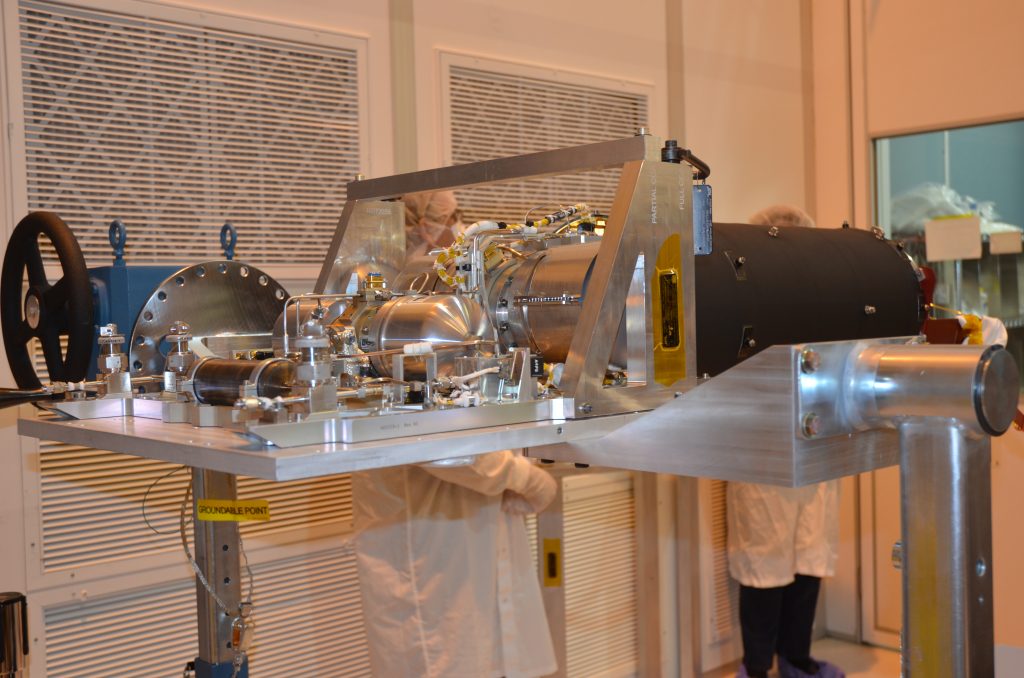
A while ago, we provided an update on the optical alignment of the different instruments of the JWST to its telescope, with the exception of one – the Mid-Infrared Instrument or MIRI – because of the cold temperature needed. Here is more information on how exactly it will get down to its 7 Kelvin operating temperature.
Cold helium gas has been flowing over the instrument, but that’s only enough to get it down to 15 Kelvin. To finish cooling, MIRI has its own cryocooler, which takes the helium gas and squeezes it. The gas cools as it expands out of the cooler, cooling the MIRI instrument with it. This cooling is necessary to see exoplanets with temperatures thought to be similar to Earth. MIRI has four coronagraphs to precisely separate these planets from their host stars and characterize their atmospheres’ chemical makeup.
And now for a launch. Erik?
A SpaceX Falcon 9 launched Crew Dragon Endeavour towards its third docking to the International Space Station (ISS) on April 8 at 15:17 UTC, carrying four commercial astronauts conducting Axiom Space’s Ax-1 mission, which has goals of getting experience in microgravity and also conducting research and philanthropic activities.
Also making another trip to send people into orbit was Falcon 9 first stage B1062, making its fifth flight. It successfully landed on the droneship A Shortfall of Gravitas.

Over the last few years, NASA has been trying to encourage the commercial use of space and in particular the International Space Station. Besides the commercial facilities and even an airlock module on the ISS, there have been two programs to provide services: the Commercial Cargo Program and Commercial Crew Program. Commercial Cargo essentially saved SpaceX from bankruptcy after three failed Falcon 1 launches in the early days of the company.
The next major part of this was the Commercial Crew Program, under which NASA contracted two companies – SpaceX and Boeing – to design and build spacecraft to take NASA astronauts and others to orbit. The end result of this was SpaceX’s Crew Dragon, developed with NASA funding and technical support. Boeing is… still trying.
This mission, the next phase of NASA’s efforts to encourage the commercial use of space, is the first wholly commercially-operated crewed mission to the ISS. NASA has contracted with Axiom to attach modules to the ISS segment in the years leading up to its deorbiting. Prior to it being deorbited, currently scheduled for 2028, the Axiom modules will become their own independent space station. The first Axiom module is scheduled to go up to the ISS in 2024.
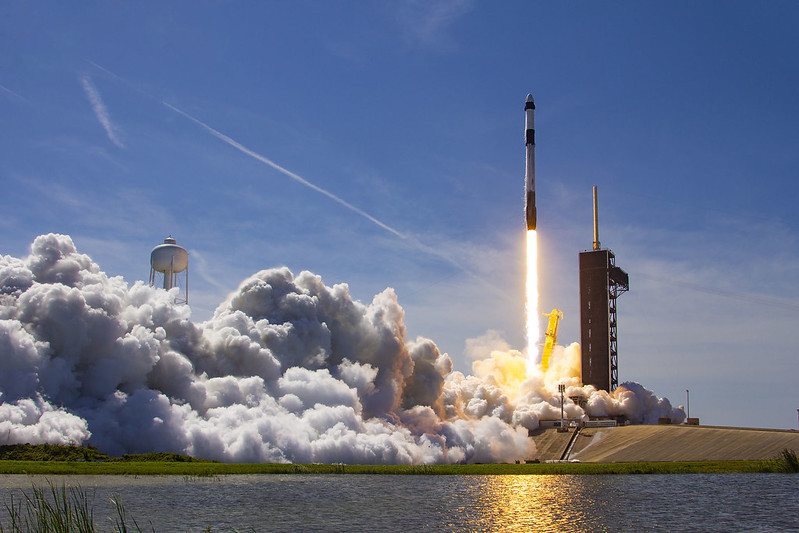
After a long 22 hours in orbit phasing towards the ISS (a long trip compared to the three to six hours on the Soyuz that NASA astronauts and previous space tourists used to fly), the capsule autonomously docked to the zenith, or space facing port, of Node 2 on April 9. Crew Dragon takes this slower approach because it’s easier on mission planning, and there is much more space in the Crew Dragon than in the Soyuz module. They will spend eight days docked to the ISS doing science and philanthropic activities. Following their first flight, Axiom Space plans to offer crewed flights to the ISS as often as twice per year, “aligning with the flight opportunities as they are made available by NASA”.
The Crew of Ax-1 is composed of former NASA astronaut and current Director of Business Development at Axiom Space, Michael López-Alegría, and three private astronauts — Larry Connor, Eytan Stibbe, and Mark Pathy. López-Alegría flew to space four previous times: three times on the Space Shuttle and once on a Soyuz. This flight makes him only the seventh person to fly into space on three different types of spacecraft, after Walter Shirra, John Young, Shane Kimbrough, Aki Hoshide, Soichi Noguchi, and Thomas Marshburn. He was Commander of Expedition 14 in 2006 and set several space records, including the second-most EVA time overall, over the course of ten EVAs.
The Ax-1 crew will conduct a packed program of science, with the crew performing more than 25 experiments in many areas. These include stem cell studies for cancer research and “self-assembling satellites”, among others.
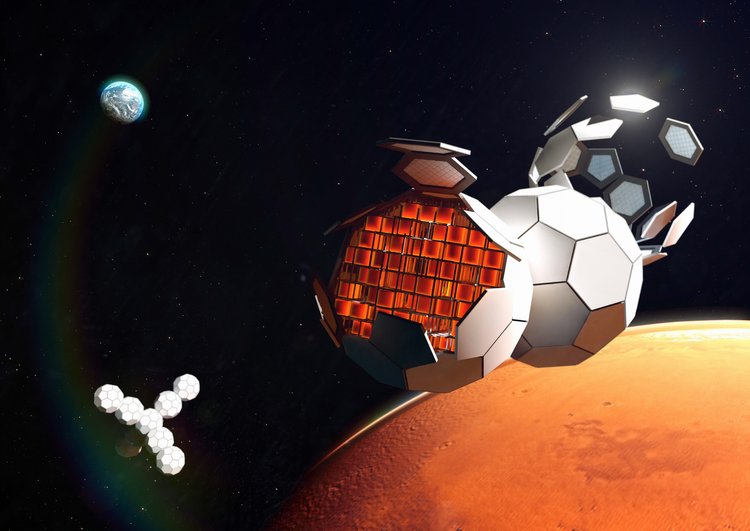
MIT’s TESSERAE experiment is exploring self-assembling satellites. The experiment consists of a series of tiles with magnets that, once on the ISS, will unfold and assemble themselves into a structure autonomously. These structures will have many uses in the future, including a future space telescope mirror and a base on the surface of another planetary body.
The cancer stem cell experiment will use microgravity to age cancer stem cells faster than they would on Earth. It will evaluate the early stages of cancer in structures called tumor organoids, which are artificially constructed models of small parts of the human body produced to study specific things. The experiment will look for certain molecules called biomarkers, which can help provide an early diagnosis of cancer. On orbit, the crew will examine the samples in a microscope as they go through cycles of growth.
We’ll have updates on all of these experiments and more when Ax-1 returns to Earth on April 18, and we’ll also bring you coverage of SpaceX’s Crew-4 mission that is scheduled to launch later this month.
Coming up next, we have some astronomy, particle physics, and planetary science news.

Last week we brought you news of Earendel, the newest farthest star. Its light traveled 12.9 billion years to reach us, and that is overwhelmingly far for a universe that is only 13.8 billion years old. But Earendel is just one star, and galaxies, with their diversity of stars and bright gas, can be seen to even greater distances, and today we have a new farthest galaxy to present. Like Earendel, this object’s light was enhanced by a galaxy cluster acting as a gravitational lens.
Cataloged as HD1, this smudge of light was discovered in 1,200 hours of data taken by the combo of the Subaru Telescope, VISTA telescope, UK Infrared Telescope, and Spitzer Space Telescope. It was then confirmed with Atacama Large Millimeter/submillimeter Array (ALMA).
Or at least confirmed as well as anything this faint and far can be confirmed. According to ALMA observer Akio Inoue: We found a weak signal at the frequency where an oxygen emission line was expected. The significance of the signal is 99.99%. If this signal is real, this is evidence that HD1 exists 13.5 billion light-years away, but we cannot be sure without a significance of 99.999% or more.
This work is published in The Astrophysical Journal with lead author Yuichi Harikane.
This galaxy formed when the universe was just 300 million years old and is remarkably bright. It is either undergoing massive star formation or has an active black hole or both.
When… is it too soon to say when? When JWST starts doing science, HD1 is selected to be studied during JWST’s cycle 1 observations.

When you hear about the farthest, youngest, or otherwise early in the universe object being discovered, exactly how it is described can be confusing.
As the light from distant objects like HD1 has traveled toward us, space has been expanding, and the distance between us and the object that the light has to travel from has been changing. I like to say how long the light traveled; that doesn’t tell you where the object is, but it reminds you that we’re seeing it as it was, not as it is.
Distance is also a bit nonsensical. We know how far the light traveled – 13.5 billion light-years – but that distance isn’t the same as the distance between us and that object today or us and the object when it formed. It’s more like trying to say how far someone had to run when they ran up the down escalator. They might have ended up traveling one story, but they had to run up more than just one story of stairs, and it is all a bit messy to sort.
Making it more complicated, time is not constant, and space can change, too.
Gravitational waves are the space-time equivalent of crash alarms. When massive objects orbit closely, they radiate energy in the form of gravitational waves. Like soundwaves, these waves compress and expand what’s around them, but while sound waves change air, gravitational waves compress and expand space itself.
We can detect the waves from merging black holes and neutron stars with detectors on Earth, but just like there are sounds ears can’t hear, there are gravitational waves both too long and too short for us to detect with the size detectors we can put on our planet. Researchers want to detect all sizes of crashes though, so they get creative. Researchers started using pulsars to look for massive waves a while back. With radio telescopes, they looked for slight changes in pulsar timing that would indicate space expansions and contractions between us and pulsars. And this is awesome, except a lot of random things between us and pulsars can interact with radio light including things like random electrons.
To escape this issue, researchers have started monitoring pulsars in gamma-ray light — a high-energy color that pretty much just flies straight and true without interruption. After collecting five years of data, researcher and co-lead of this study, Aditya Parthasarathy, says: The Fermi results are already 30% as good as the radio pulsar timing arrays when it comes to potentially detecting the gravitational wave background. With another five years of pulsar data collection and analysis, it’ll be equally capable with the added bonus of not having to worry about all those stray electrons.
While nothing has been seen yet, the kinds of supermassive black hole mergers this may detect are rare, and the quality isn’t yet the best. But it will get there, and someday, we may see gravitational waves in the changing shape of space using Fermi.
This work appears in the journal Science and comes from the Fermi-LAT Collaboration.
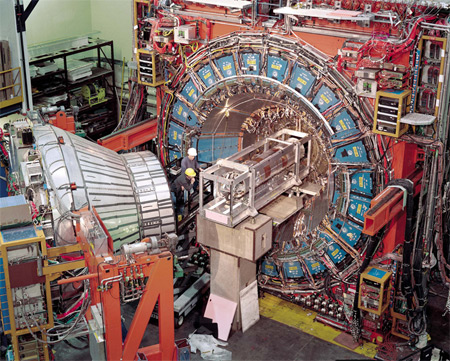
Before switching to more down to Earth science, we want to call your attention to the possible detection of a particle – the W boson – in data from the Chicago area Fermi National Accelerator Laboratory’s Tevatron collider. Now turned off, the experiment ran until 2011 and its wealth of data is still being searched for the signatures of particles popping and out of existence. The W boson is part of the weak force and is involved in a variety of decay processes. Measuring the masses of bosons like the W boson and the more famous Higgs boson is key to testing our current understanding of particle physics.
And while the Higgs boson is everything we ever expected, the data from Fermi hint at the W boson being much heavier than previously thought. If this is true, it opens the door for new physics and requires rethinking old ideas.
The results being looked at only come from one facility. At Fermi, protons and anti-protons accelerated into one another and produced cascades of particles that researchers had to piece together so they could say, “These resulting particles all came from the decay of this one unstable thing that had this one mass.”
This is not easy, and while the data looks good, that doesn’t mean it is certain. We look forward to other accelerators repeating the experiment, and for now, we remain open to both the possibility that everything is as it should be with the universe – and Fermilab was wrong – and to the possibility that we were wrong and everything needs to be rethought because Fermilab is right.
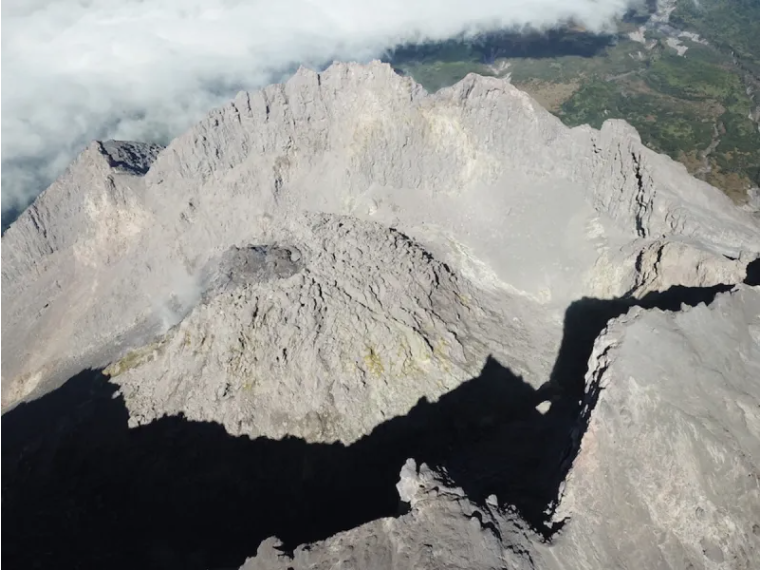
Sometimes, getting things right is a matter of getting a fresh perspective.
In the case of volcanoes, scientists have brought drones to the summit of Mount Merapi in Indonesia in order to get a better look at the new lava dome. The dome has been forming since 2018 but had begun collapsing, and the scientists wanted to find out just how and why it was collapsing. This volcano is Indonesia’s most active one, which means understanding it is very important to the health and well-being of the local population.
Using a drone, the team captured over a thousand high-resolution images from about 500 meters above the lava dome. They had already been using this method and with the additional time, they were able to see what was going on with this newer dome. Mind you, it’s not easy to get usable images at the top of an active volcano, as coauthor Valentin Troll explains: Gas emissions or clouds can obscure the view into the crater and onto the dome at times.
From an entire decade’s worth of data, researchers discovered that there was a horseshoe-shaped fracture system that had formed in 2012 and was buried by lava in 2018. That fracture zone weakened the new dome, which then collapsed in 2019. Additionally, the fracture system is allowing hydrothermal alteration of the minerals to occur, which is further weakening the rock. Their results were published in the journal Scientific Reports.
And now they know what to keep an eye on in the future – from drones in the sky.
Speaking of volcanoes, how about some cryovolcanoes?
Interview
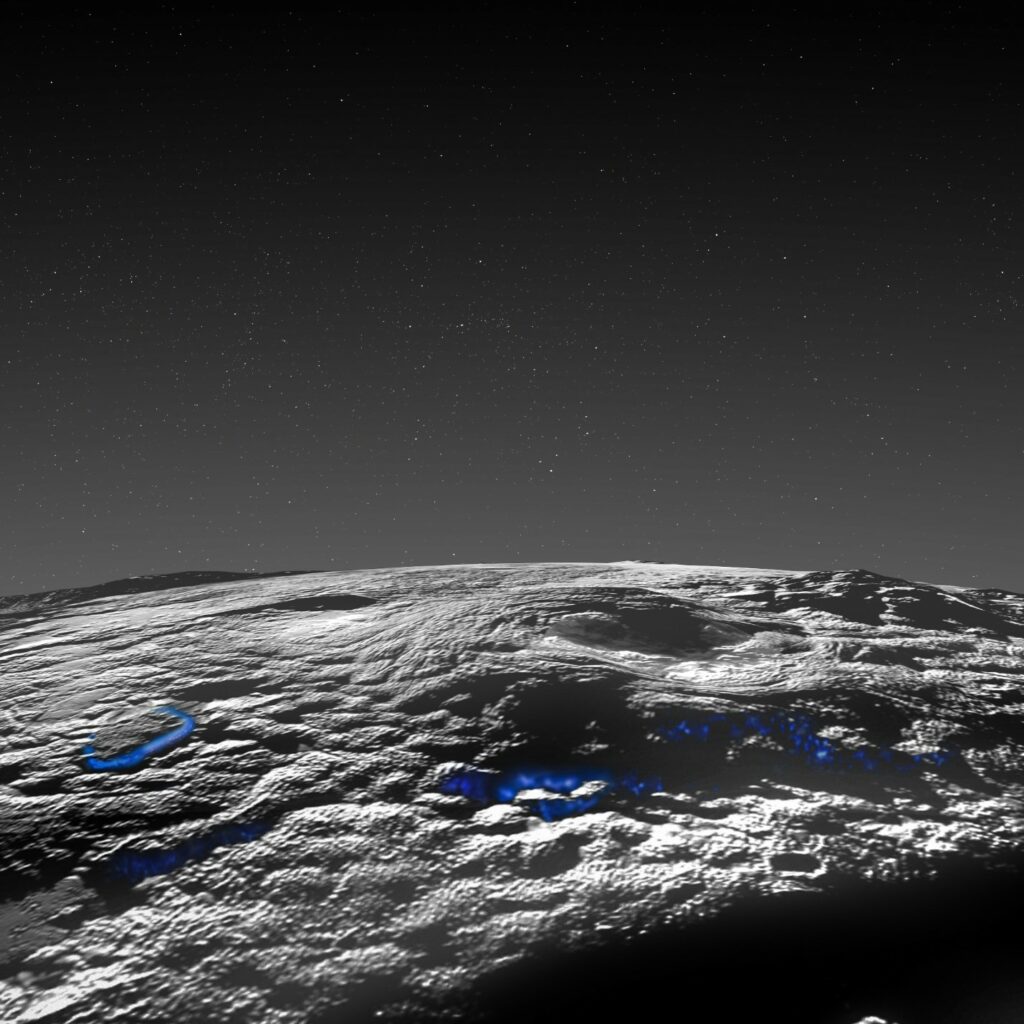
As we reported a couple of weeks ago, a new analysis of images taken by the New Horizons spacecraft as it flew by Pluto has found several giant ice volcanoes that seem to have been active in the geologically recent past. These findings suggest that Pluto managed to hang on to its internal heat longer than previously thought, and that could change our perspective on other bodies in our solar system.
The results were published in Nature Communications and led by Dr. Kelsi Singer.
And now we are pleased to be joined by Dr. Singer, who is a senior research scientist at the Southwest Research Institute. Additionally, she is a New Horizons Co-Investigator and Deputy Project Scientist, having worked on the mission since her postdoc position back in 2014.
Thank you for joining us, Dr. Singer, and welcome.
[Transcript unavailable]
Once again, thank you for this interview, Dr. Singer. We hope to have you back again soon with more news on Pluto and cryovolcanoes.
This has been the Daily Space.
To all of you watching, this conversation ran longer than we can air here on NowMedia. You can catch the interview in its entirety on our website, DailySpace.org.
While you’re there, check out our show notes to find more information on all our stories, including images. As always, we’re here thanks to the donations of people like you. If you like our content, please consider joining our Patreon at Patreon.com/CosmoQuestX.
Credits
Written by Pamela Gay, Beth Johnson, Erik Madaus, and Gordon Dewis
Hosted by Pamela Gay, Beth Johnson, and Erik Madaus
Audio and Video Editing by Ally Pelphrey
Content Editing by Beth Johnson
Intro and Outro music by Kevin MacLeod, https://incompetech.com/music/


 We record most shows live, on Twitch. Follow us today to get alerts when we go live.
We record most shows live, on Twitch. Follow us today to get alerts when we go live.